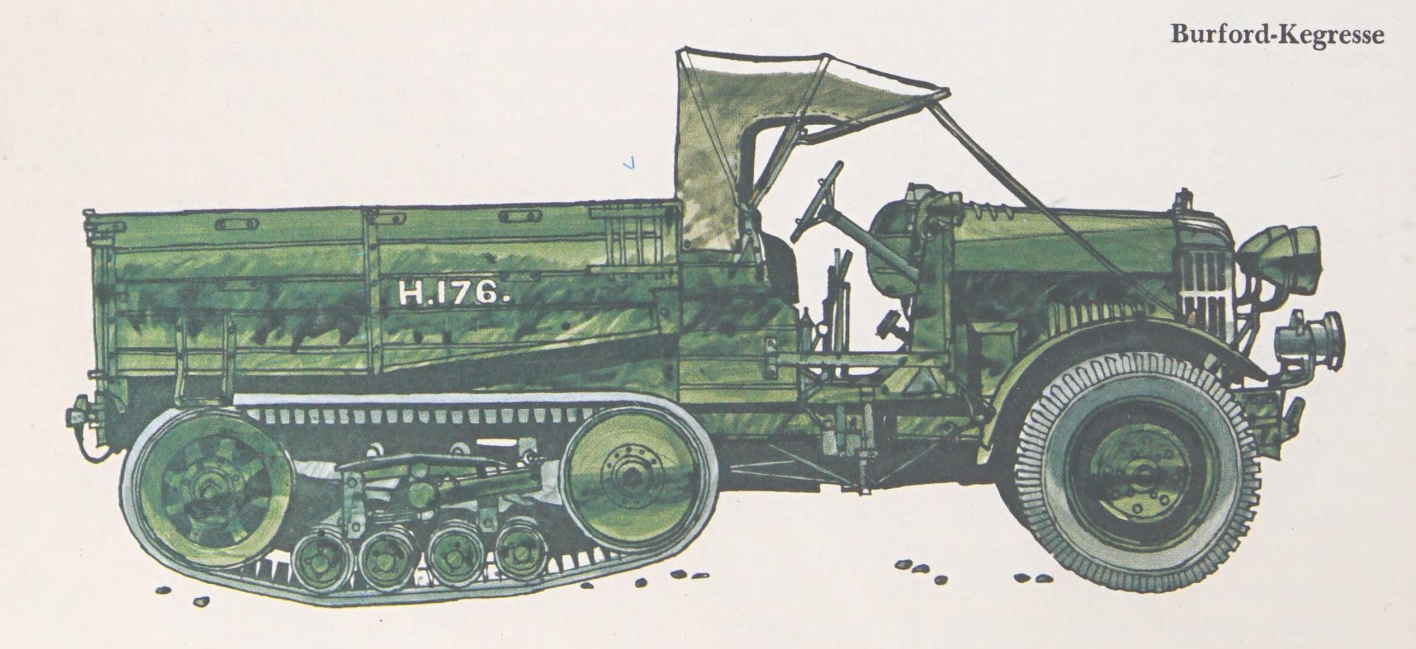
An 30 cwt armored personnel carrier called “Burford-Kégress” was built by the British firm Burford on the basis of its four-axle trucks with wheel formula 4 × 2. It was equipped with rear-axle powered Kégresse tracks produced under license from the French company Citroën. Finished in 1926, the prototype passed trials, the results of which were positively received by the military and in the same year the British Army commissioned Burford to build a small batch. Despite the success of the test, as a result of continuous operation it was discovered that the Kégresse had an extremely low wear resistance and often broke down. As a result, in 1929, only three years after its creation, the machines were taken out of service and later scrapped.
Citroen-Kegresse P17
The 1920s were a period of rapid development in the design of military vehicles. Foremost among new types evolved was the half-track Credit for the invention of the idea goes to Adolphe Kegresse who had managed the Czar of Russia’s transport feet before the Revolution of 1917. In 1910, Kegresse had perfected a track to replace the rear wheels of the Czars cars, to give better traction in the snow. After Kegresse had fed from Russia he took his idea to Andre Citroen in Paris. Citroen tried it and was impressed with the Kegresse half-track, which he fitted to some of his motor cars. In essence the Kegresse track was a rubber band round two guide wheels, with a small sprung bogie to spread the load. In the winter of 1922-23 Citroen equipped a motor-car expedition across the Sahara to prove the cross-country capability of his semi-tracked vehicles. The good publicity obtained by this led to military orders, notably from the United States and British armies, as well as the French. The British used their Citroens mainly as artillery staff cars, the Americans used them as light artillery tractors, while the French used them as gun tractors, troop carriers and recovery vehicles. In Britain the Kegresse tracks were subsequently used on front-wheel drive Trojan light cars-producing a vehicle very much like the Citroen-and on Crossley and Burford trucks, which were used as troop carriers and artillery tractors. All enjoyed a cross-country ability which was beyond most wheeled trucks of the time
What amounted to a rival design, the Road less Track, appeared in Britain under the aegis of Lt-Col. Johnson, who had designed the fast, ingenious, but largely unsuccessful Medium Mk D tank of 1919. After leaving the army Johnson formed the Roadless Traction Co. These units for tractors, trucks, or cars, were designed to replace the rear wheels on almost any vehicle. The tracks were of flexibly articulated stee shoes and the large rear sprocket wheel fitted directly on the live rear axle. Small bogies were carried on cantilever arms from the idler axle. The roadless track was fitted on Morris, Guy, and FWD trucks for military service, though it did not enjoy the same international fame as the Kegresse track.
Somewhat akin to the half-track was the wheel-and-track vehicle designed to run on either wheels or track as the terrain demanded. Several nations tried this idea. The best known was the Vickers – Wolsley staff car which was first demonstrated at the 1927 Colonial Conference The tracks were lowered from a power take-off using bell crank arms. However little more was heard of this complicated and largely impracticable idea, though it was subsequently tried as well on several experimental tank designs.